For more information and quotation – please
contact our office.
Hluboka nad Vltavou – Chateau
The Chateau Hluboka belongs to one of the most beautiful in Europe and that
mainly due to its sensitive composition of the building and the countryside.
Present appearance dates back to the reign of count Jan Adolf II Schwanzenberg
and his wife Eleonora. The countess fell in love with the Windsor Royal Castle
and she decided to rebuild Hluboka according to Windsor. The exterior was made
in the pure Neo–Gothic style and Eleonora shaped the interior. Complicated
parquet patterns and wood carving motives for furniture, Renaissance ceilings
and gold–plated tiles were chosen. Unusual attention was paid to landscaping of
surroundings.
Karlstejn
This half day excursion visits one of the most impressive bohemian castles. The
Karlstejn castle was built by Charles to guard the emperor crown jewels and holy
relics. About 35 km from Prague, surrounded by woods and built on a 300 m chalky
rock, this castle is a glorious example of medieval architecture. The castle is
built in Peak Gothic style and is one of the most visited castles in the Czech
Republic. The most famous part of the castle is the Chapel of the Holy Cross.
Master Theodoricus decorated the chapel with 127 Gothic paintings.
Krivoklat
This half day excursion visits the royal castle of Krivoklat, which was built in
the 12th century. Throughout the centuries it had been restored several times
after fire damage in the years 1422, 1597 and 1643. The castle now offers a
historical exposition of silverware, gothic paintings and sculptures as well as
a portrait gallery and a torture chamber.
Kutna Hora
Kutna Hora is a former royal silver town, nowadays it is the cultural, political
and economic centre of Eastern Bohemia. Its power reached its height in the 15th
and the 16th century, when the richest silver mines in Europe were found there.
The town has kept the atmosphere and appearance of a medieval town till today.
Among the most dominant monuments of the town are: The St Barbora Cathedral
which – a piece of Gothic architecture of the 14th century, The Italian Court –
a former royal residence (The Czech coins (groshens and tollars) were minted
there), the former gothic fortification Hradek, The St James Church which is
consecrated to the patron of miners – St James, a monumental Baroque called the
Nunnery of Ursulines. Suffice to say that Kutna hora city centre is protected by
UNESCO.
Melnik
The half day excursion visits this city, where the castle of Czech princesses
and queens is located on the confluence of the labe (Elbe) and Vltava (Moldau).
The present renaissance look dates from the 16th century and the lobkowicz
family are proud owners after restitution. The visit includes an exhibition of
Czech baroque paintings and historical interiors. Wine tasting is offered
together with a tour through the Castle with its historical wine cellars.
Nelahozeves
The castle originated as a newly erected building since 1553 for Florian
Griespek from Griespach, however its completion was interrupted by the death of
the builder in 1588. The outer facades have been almost completely preserved as
well as some of the interiors. Among the preserved Renaissance spaces the most
interesting is the Knight Hall with a stone hearth and ceiling painting. The
accessory to the castle is rich and one of high quality. Most of it comes from
the castle of Roudnice, the main residence of the influential family of
Lobkowitz who since 1623 owned also Nelahozeves and from whose kin is also the
present owner of the castle Martin Lobkowitz. The collections of the castle
contain first of all an exceptionally rich picture gallery with works of famous
European masters and with one of the largest collections of Spanish portraits
from the 16th and 17th centuries outside of Spain. Apart from the furniture (including
exquisite pieces from 16th to 18th century) it is also possible to see, in the
castle rooms, medieval shrines and other clerical objects, a collection of
ceramics, artistic objects made of silver and other metals, silver dishes and
old musical instruments.
Nizbor Glassworks
This half day excursion to the glassworks of Nizbor is interesting not only due
to the long tradition of this company. It was founded in 1903 by Antonin Ruckl.
The village at that time was chosen for its good infra structure and
availability of cheap raw materials. The company co–operated with different
artists and had its productivity peak in the 1930's. The factory became most
known for its hand cut crystal vases, Jars etc. After world war II the company
was nationalized and incorporated into the state glass corporation. Since the
restitution this company went back to its roots for quality hand made crystal.
Podebrady
The closest remarkable spa to Prague is Podebrady. The first spring of mineral
water was discovered in a castle courtyard about 90 years ago. The spring
containing carbon dioxide, and calcium cures heart diseases, metabolic and
endocrine disorders. Podebrady is a real spa town with vivid cultural life and
is placed in a nice countryside.
Terezin Memorial
It was originally a large fortress built during the reign of Emperor Joseph II.
In 1941 (during WWII) it was converted into a ghetto for Jews from the
Protectorate of Bohemia ad Moravia. From 1942 Jews from Germany, Austria,
Holland, Denmark, Slovakia and Hungary were also deported to Terezin. The camp
served mainly as a collective and transit place. Between 1941 and 1945 Nazis
deported up to 150 000 people to Terezin, 35 000 of them died there. The Terezin
Memorial to commemorate all those who suffered and died there was founded in
1947. Museum, cemetery and small fortress containing the equipment from the
concentration camp.
Veltrusy
Count Václav A. Chotek had this manor built around 1716. About 1764 the
originally short Gothic wings were extended by Rudolf Chotek who also had the
interiors of the manor newly furnished. The utility buildings were built in
1804; together with the northern wings of the manor they close the courtyard of
honour. The manor is surrounded by a large park with several Empirical and
Romantic decorative buildings. The interiors contain, apart from the furniture,
paintings and fine glass chandeliers, also collections of china and a number of
valuable objects of artistic craftsmanship. The rooms which were furnished in
the period of Rococo stand out with their beauty.
|
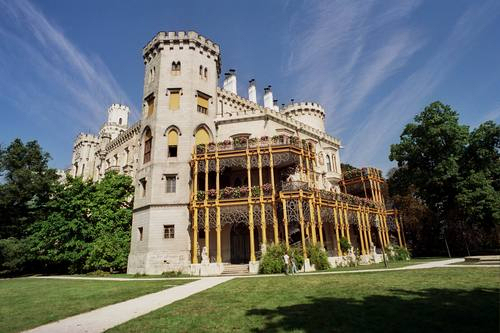
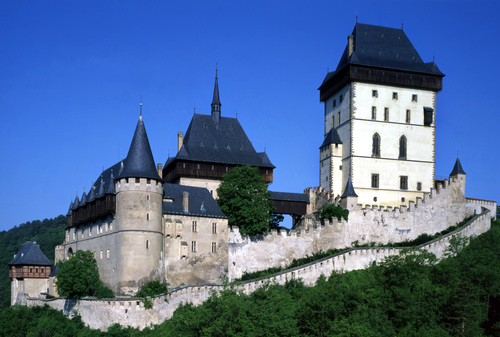
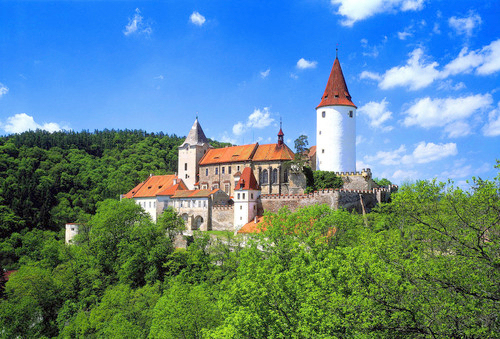
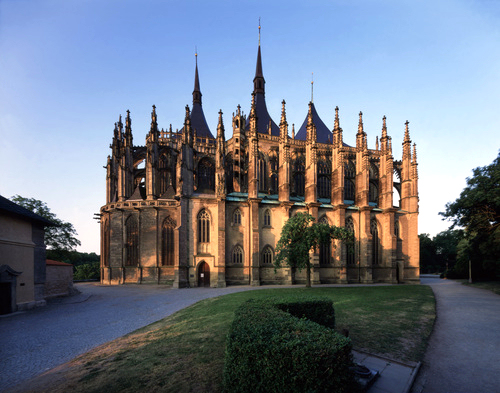
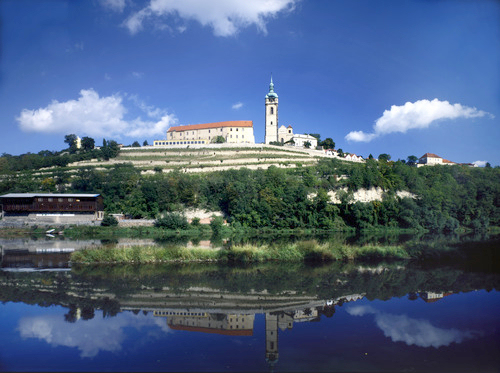
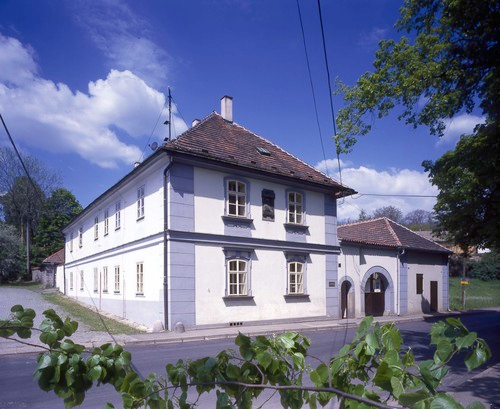
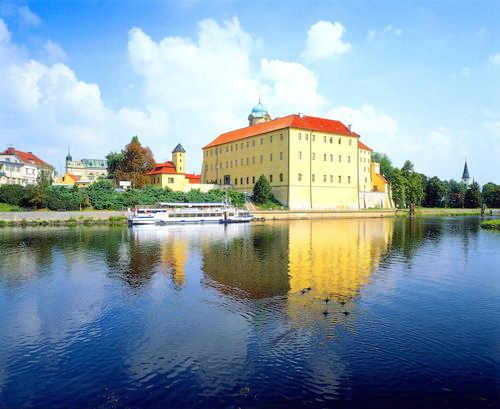
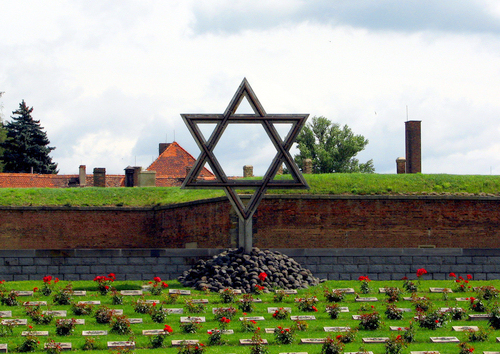
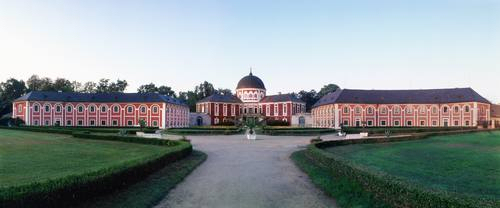
|


